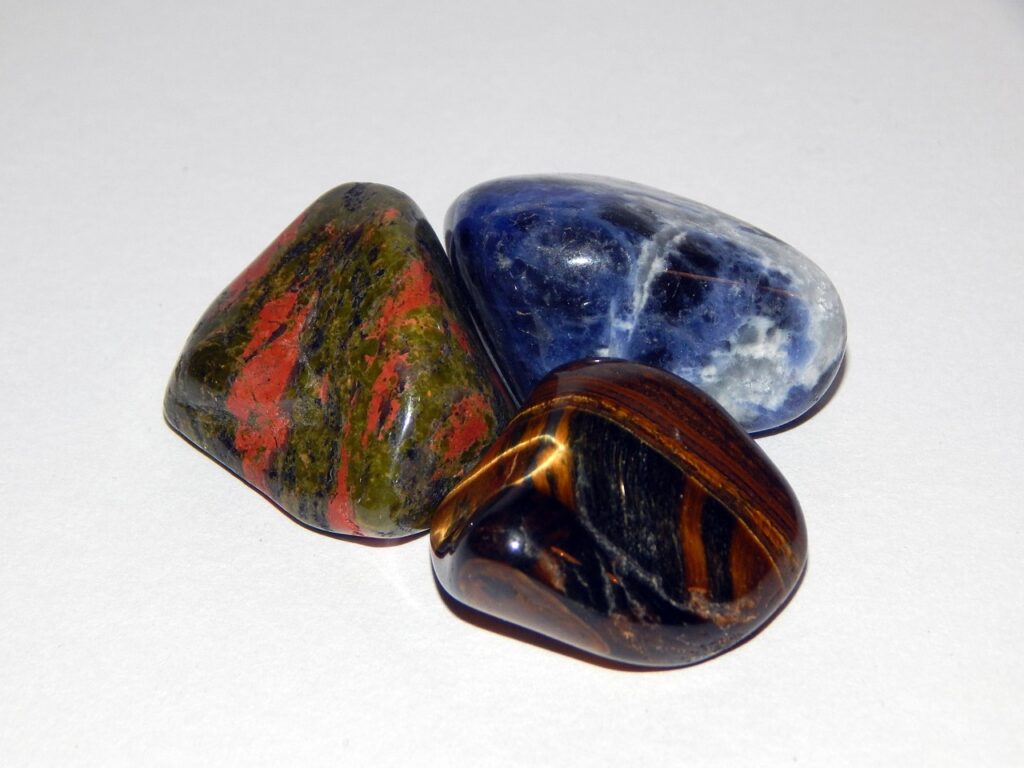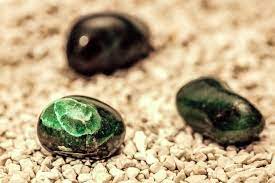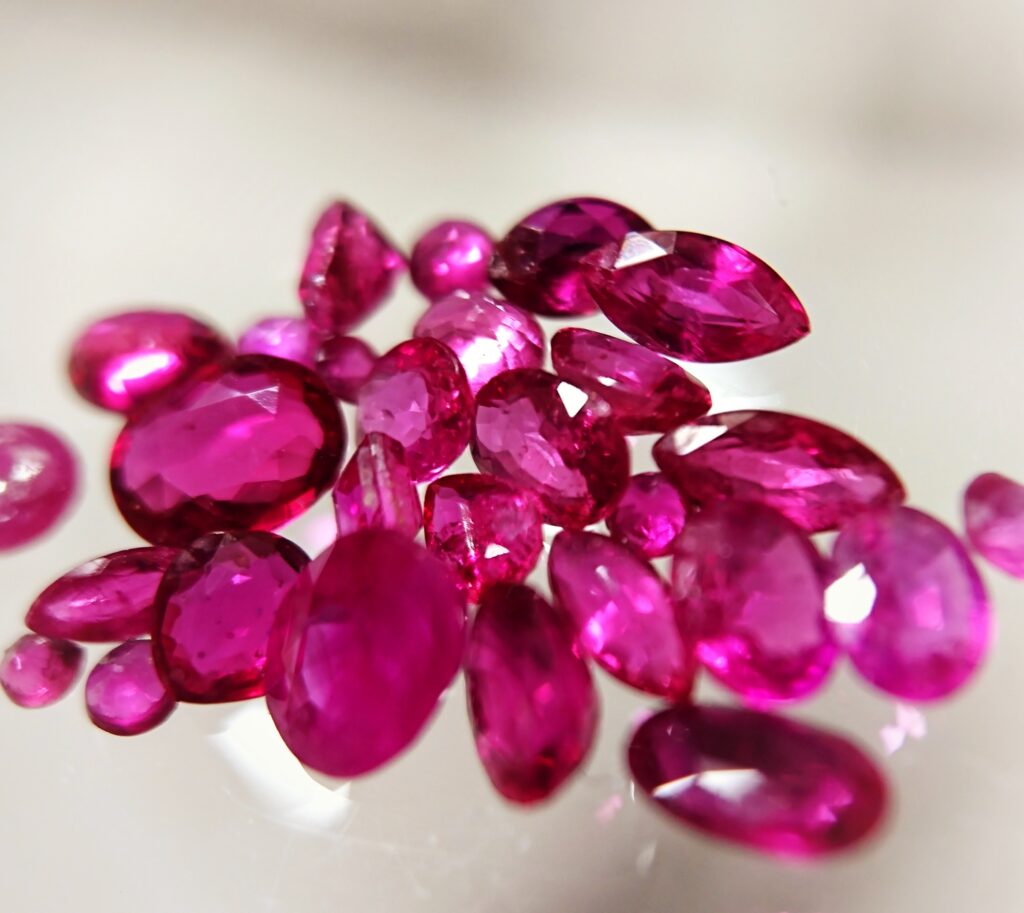Step into a world of breathtaking beauty and enchantment as you explore the mesmerizing realm of purple gemstones. Delve into a world filled with vibrant hues and profound symbolism, where amethyst, tanzanite, and sapphire reign supreme. Discover the captivating allure and timeless elegance of these precious jewels, as the rich purple tones evoke a sense of intrigue, mystery, and regality. From the deep, velvety shades of amethyst to the regal brilliance of tanzanite, immerse yourself in the exquisite beauty that purple gemstones have to offer.
Understanding the Allure of Purple Gemstones
Purple gemstones have long captivated the human imagination with their enchanting beauty and mystical allure. The rich hue of purple has always been associated with royalty, luxury, and power. From ancient civilizations to modern times, purple gemstones have held a special place in our hearts and have become highly sought after in the world of gemstone collecting and jewelry design. In this comprehensive article, we will delve into the historical significance, symbolic meanings, rarity, and appeal of purple gemstones, exploring some of the most renowned varieties such as amethyst, sugilite, purple sapphires, charoite, purple jade, purple diamonds, purple garnets, and purple fluorite. So, sit back, relax, and let us take you on a journey through the beautiful world of purple gemstones!
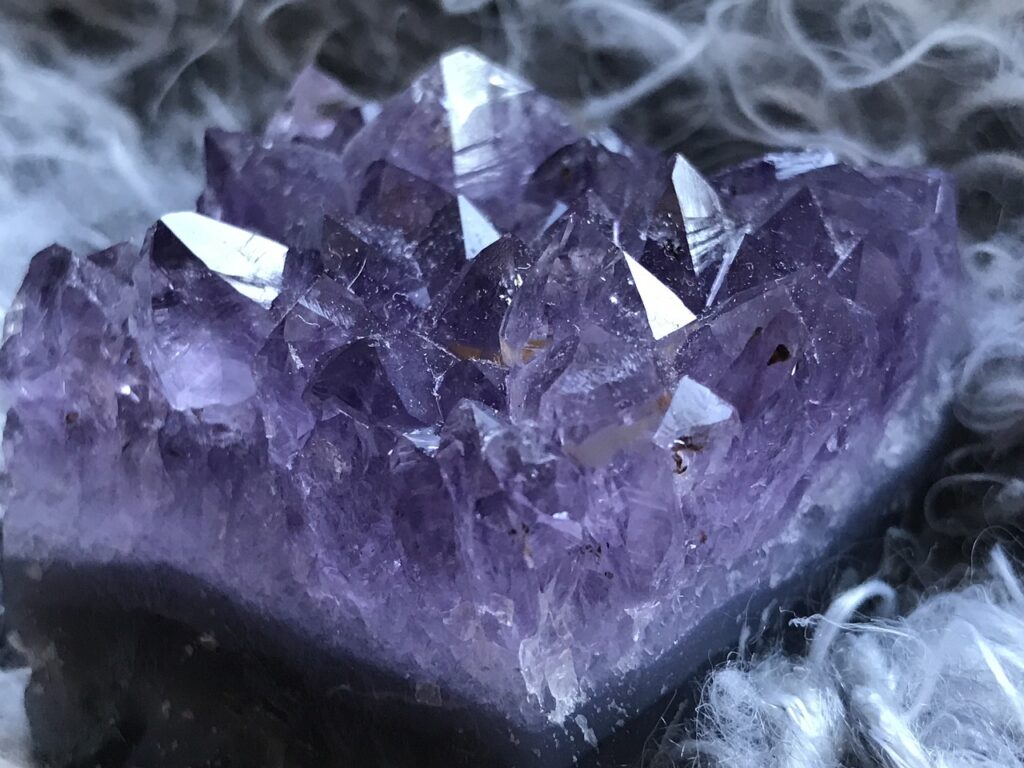
Historical Significance of Purple Gemstones
Throughout history, purple gemstones have been associated with kings, emperors, and other noble figures. The color purple was incredibly rare and expensive to produce in ancient times, making it a symbol of wealth and prestige. The ancient Phoenicians were known for their production of a purple dye derived from the murex shellfish, which was used to color fabrics and other goods. This dye, known as Tyrian purple, became highly prized in ancient Rome and was reserved for the clothing of the highest-ranking individuals. Purple gemstones, with their regal hue, became synonymous with royalty and power, and were often used to adorn crowns, scepters, and other royal jewelry.
Symbolic Meanings of Purple Gemstones
In addition to their historical significance, purple gemstones also hold powerful symbolic meanings. The color purple has long been associated with spirituality, wisdom, and intuition. It is believed to enhance creativity and stimulate imagination. Purple gemstones are often regarded as stones of transformation and spiritual growth, helping individuals tap into their inner strength and embrace their true potential. They are also said to promote calmness, tranquility, and emotional balance, making them highly popular in meditation practices and alternative healing modalities. Each variety of purple gemstone carries its own unique symbolism, further adding to their allure and appeal.
The Rarity and Appeal of Purple Gemstones
One of the factors that contribute to the allure of purple gemstones is their rarity. While gemstones of various colors can be found in nature, purple gemstones are relatively scarce. This scarcity is often due to the specific geological conditions required for their formation. The unique combination of minerals and trace elements needed to create the captivating shades of purple is a rarity in itself. As a result, purple gemstones, especially those of high quality and intense color, are highly sought after by collectors, gem enthusiasts, and jewelry connoisseurs. Their scarcity, combined with their historical significance and symbolic meanings, makes purple gemstones truly special and highly prized in the world of gemology.
Amethyst: The Quintessential Purple Gemstone
Arguably the most well-known and widely recognized purple gemstone, amethyst holds a special place in the hearts of gemstone enthusiasts and jewelry lovers alike. With its captivating violet hues ranging from light lilac to deep royal purple, amethyst is a gemstone that truly embodies the beauty and allure of purple.
Origin and Geological Composition of Amethysts
Amethyst, a variety of quartz, derives its purple color from trace amounts of iron impurities present during its formation. The most renowned sources of amethyst include Brazil, Uruguay, and Zambia, although it can also be found in various other regions around the world. This gemstone often forms in geodes within volcanic rocks, and its crystals exhibit a hexagonal symmetry. The unique combination of geological conditions required for the formation of amethyst contributes to its rarity and exceptional beauty.
Different Shades of Amethysts
Amethysts display a wide range of hues, from pale lavender to deep purple. The intensity of the color is often determined by the presence of iron and other trace elements, as well as the lighting conditions under which the gemstone is viewed. Lighter shades of amethyst are often referred to as “Rose de France” and are prized for their delicate pastel tones. Deep purple amethysts, on the other hand, are highly sought after for their regal and majestic appearance. The color zoning within amethyst crystals adds a unique character to each gemstone, making them truly one-of-a-kind.
Notable Amethyst Jewelry and Collectibles
Amethyst has been cherished and incorporated into jewelry designs for centuries. Its regal color and exceptional clarity make it a perfect choice for a variety of jewelry pieces such as rings, pendants, earrings, and bracelets. Some notable examples of amethyst jewelry include the Russian Crown Jewels, which feature exquisite amethysts among other gemstones, and the amethyst tiara worn by Queen Elizabeth II. In addition to jewelry, amethysts can also be found in various decorative objects, such as carved figurines, vases, and perfume bottles, further showcasing their versatility and timeless appeal.
Sugilite: The Lavender Beauty
Sugilite, with its stunning lavender hue, is a relatively rare gemstone that has gained popularity among gem enthusiasts in recent decades. Its unique color and distinctive geological traits make sugilite an exceptional addition to the world of purple gemstones.
Geological Traits of Sugilites
Sugilite, also known as Luvulite or Royal Azel, is a rare cyclosilicate mineral that belongs to the pyroxene group. It was first discovered in the 1940s in Japan and was named after its discoverer, Ken-ichi Sugi. Sugilite typically forms in metamorphic rock environments and can be found in a range of colors, including various shades of purple, from light lilac to deep violet. The gemstone often exhibits a semi-translucent appearance, allowing light to pass through and enhance its beautiful lavender hues.
The Discovery of Sugilite
Sugilite’s discovery in Japan opened the doors to the exploration of this unique gemstone. In subsequent years, significant deposits of sugilite were found in South Africa, Canada, and India. This gemstone quickly gained popularity among gem collectors and jewelry designers for its striking color and rarity. Today, sugilite is highly valued for its beauty and has become a sought-after gemstone in the world of lapidary art.
Sugilite in Art and Jewelry
Due to its vibrant color and unique geological traits, sugilite has found its way into various forms of artistic expression, including both fine art and jewelry design. Artists and craftsmen alike have been captivated by sugilite’s captivating hues, incorporating it into paintings, sculptures, and other forms of artistic creations. In the realm of jewelry, sugilite is highly favored by designers for its ability to add a touch of elegance and individuality to their creations. From delicate pendants to statement rings, sugilite jewelry pieces never fail to make a bold, yet sophisticated, statement.
Purple Sapphires: The Majestic Radiance
Purple sapphires offer a regal and majestic radiance that is both captivating and timeless. With their vivid purple hues and remarkable durability, purple sapphires have become a popular choice for those seeking a unique and vibrant gemstone.
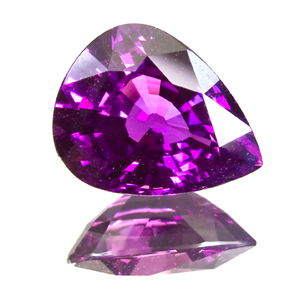
Origins and Rarity of Purple Sapphires
Purple sapphires, like their more well-known blue counterparts, are a variety of the mineral corundum. While blue sapphires are the most widely recognized, purple sapphires are a rarer find. These exquisite gemstones can be found in various parts of the world, including Sri Lanka, Madagascar, Tanzania, and Australia. The geological conditions required for the formation of purple sapphires contribute to their rarity, making them highly prized by gem collectors and enthusiasts.
Famous Purple Sapphire Finds
Over the years, there have been several notable finds of purple sapphires that have captured the attention of gem enthusiasts. One such example is the “Hall Sapphire Necklace,” which features a stunning array of colored sapphires, including a magnificent purple sapphire pendant. This extraordinary piece of jewelry showcases the exceptional beauty and versatility of purple sapphires. Famous personalities such as Elizabeth Taylor and Princess Diana have also been known to wear purple sapphires, further adding to their allure and desirability.
Buying Tips for Purple Sapphires
When purchasing a purple sapphire, there are a few key factors to consider. First and foremost, it is essential to evaluate the color of the gemstone. Look for a vivid and intense purple hue, free from any undertones that may detract from its beauty. The clarity of the gemstone should also be taken into account, with fewer inclusions generally indicating higher quality. Additionally, the cut of the sapphire will affect its brilliance and overall appearance. Finally, consider the carat weight and the presence of any enhancements, such as heat treatment, which is common in the majority of colored sapphires. Taking these factors into consideration will help you select a purple sapphire of exceptional quality and beauty.
Charoite: The Uncommon Splendor
Charoite is a gemstone that truly stands out with its unique patterns and striking hues. Its extraordinary beauty and scarce supply have made charoite a beloved choice among gemstone connoisseurs and collectors.
Discovery and Origin of Charoite
Charoite was first discovered in the late 1940s along the Chara River in Russia, near the Charo River, which gave the gemstone its name. Initially, this unique gemstone was only known to a few collectors and scientists. However, as its beauty and rarity became recognized, charoite gained popularity and began appearing in jewelry and decorative items around the world. Today, Russia remains the primary source of charoite.
Unique Patterns of Charoite
What sets charoite apart from other gemstones is its remarkable patterns. The gemstone displays swirling patterns of purple, lavender, and white, resembling a vivid painting on its surface. These vibrant patterns are a result of the intricate intergrowth of minerals within the charoite crystal. No two charoite gemstones are exactly alike, each showcasing its own distinct and mesmerizing patterns. This uniqueness makes charoite a highly sought-after gemstone among collectors and jewelry enthusiasts.
Jewelry and Decorative Uses of Charoite
Charoite’s distinctive beauty has made it a favorite among jewelry designers. The gemstone’s vivid purple hues and swirling patterns lend themselves well to both statement pieces and delicate designs. Charoite is often used in pendants, rings, bracelets, and earrings, adding a touch of elegance and individuality to any jewelry collection. Beyond jewelry, charoite is also used in decorative objects, such as carvings, sculptures, and inlays, where its breathtaking patterns can be fully appreciated. Whether in the form of jewelry or decorative items, charoite’s uncommon splendor continues to captivate and inspire.
Purple Jade: The Imperial Gem
Purple jade, with its captivating color and cultural significance, has long held a revered place in various cultures around the world. From ancient civilizations to modern-day, purple jade remains a gemstone of great importance and beauty.
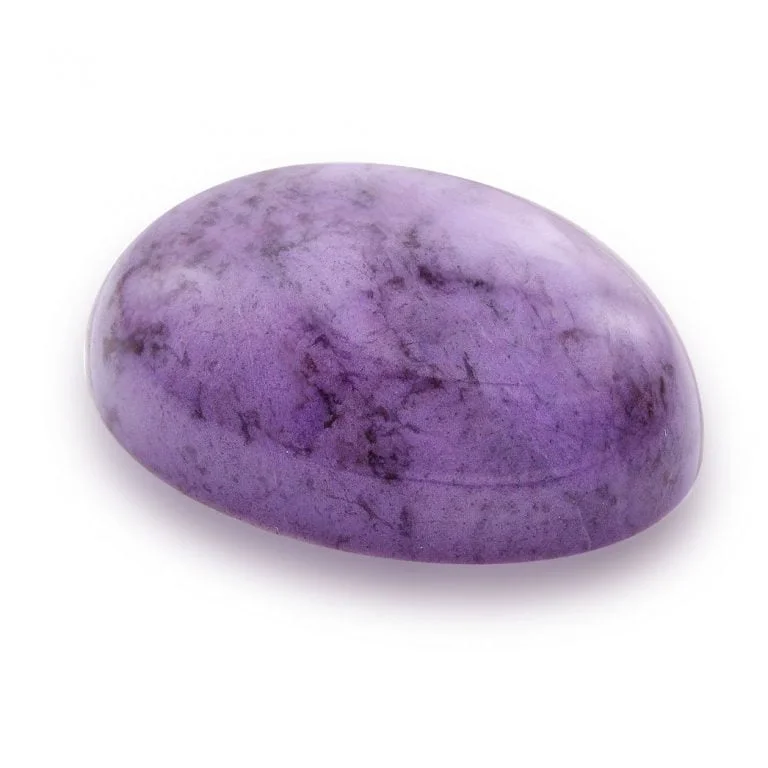
The Influence of Purple Jade in Culture
In many cultures, jade is considered a stone of great significance and is believed to bring good luck, health, and wealth. Purple jade, especially, carries additional symbolism and prestige. In Chinese culture, purple jade is considered a symbol of nobility and power, often associated with emperors and high-ranking officials. It is believed to possess protective qualities and spiritual significance, offering balance and harmony to those who wear it. The allure of purple jade extends beyond its cultural symbolism and holds a timeless appeal for its natural beauty and elegance.
Geological Composition of Purple Jade
Purple jade is a variety of the mineral jadeite, which is known for its stunning range of colors and exceptional durability. Jadeite is a pyroxene mineral, and its purple color is caused by traces of chromium and other elements present during its formation. The gemstone’s hardness and toughness make it a beloved choice for jewelry, as it can withstand daily wear and retain its lustrous appearance for generations.
Noteworthy Purple Jade Antiques and Jewelry
Purple jade has appeared in various forms throughout history, from ancient artifacts to modern-day jewelry. Antique purple jade pieces can be found in museums and private collections, showcasing the skillful craftsmanship of ancient civilizations. In contemporary times, purple jade remains highly sought after by collectors and jewelry enthusiasts. Its rich color and natural beauty make purple jade a popular choice for statement rings, pendants, and other jewelry pieces. Additionally, purple jade carvings and sculptures highlight the gemstone’s exceptional characteristics and are highly prized for their artistic and cultural value.
Purple Diamonds: The Extravagant Elegance
Diamonds have always been associated with luxury and elegance, but purple diamonds take this allure to a whole new level. With their rarity and stunning hues, purple diamonds exude extravagance and possess an undeniable allure.
Understanding Purple Diamonds and Their Rarity
Colored diamonds, including purple diamonds, are exceedingly rare and are formed through unique geological processes. The presence of specific trace elements, such as boron, during the diamond’s formation gives rise to its purple color. The intensity of the purple hue, along with the color distribution within the diamond, greatly influences its value and desirability. Purple diamonds can range from soft lavender to deep violet, and those with intense, vivid hues are the most sought after.
The Process of Grading Purple Diamonds
Like all diamonds, purple diamonds are graded based on the four Cs – color, clarity, cut, and carat weight. The color grading scale for colored diamonds is different from that of white diamonds, and many purple diamonds fall into the fancy color range. The Gemological Institute of America (GIA) uses the terms “Fancy Light Purple,” “Fancy Purple,” and “Fancy Deep Purple” to describe the color intensity. The clarity of purple diamonds is also an important factor in determining their value, with fewer inclusions resulting in higher quality stones. The cut of the diamond enhances its overall beauty and brilliance, and attention is given to preserving the maximum amount of carat weight while achieving optimal light performance.
The Most Infamous Purple Diamonds
Purple diamonds have made headlines and captured the imagination of gem enthusiasts and collectors around the world. One of the most well-known purple diamonds is the “Royal Purple Heart Diamond.” This magnificent gemstone weighs 7.34 carats and is aptly named for its heart shape and regal purple hue. Another notable purple diamond is the “Supreme Purple Star Diamond,” which weighs 2.8 carats and exhibits a radiant purple color. These rare and breathtakingly beautiful gemstones are a testament to the allure and extravagance of purple diamonds.
Purple Garnets: The Underrated Gemstone
Purple garnets are a lesser-known variety of garnets, but their unique color and exceptional beauty make them a gemstone worth exploring. With their deep purple hues and remarkable brilliance, purple garnets offer a stunning alternative to more traditional gemstones.
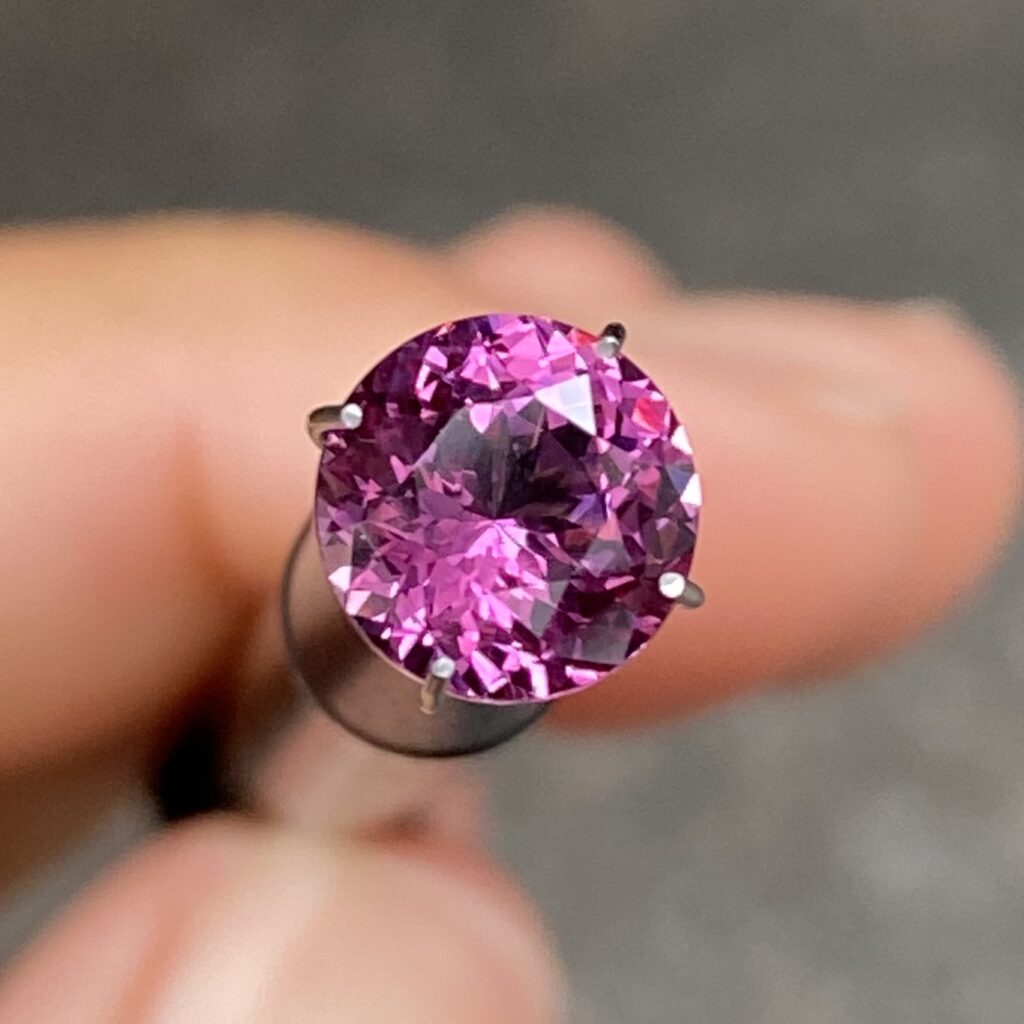
Identification and Geological Composition of Purple Garnets
Purple garnets belong to the family of pyrope-spessartine garnets, known for their captivating red hues. When chromium is present during the garnet’s formation, it gives rise to the gemstone’s distinctive purple color. Purple garnets are relatively rare and are primarily found in East Africa, particularly in the regions of Tanzania and Mozambique. The gemstone’s hardness and superb refractive index ensure that purple garnets possess excellent durability and brilliance, making them ideal for use in jewelry.
The Value and Use of Purple Garnets in Jewelry
Purple garnets are highly valued for their rich color and exceptional clarity. Their deep purple hues, ranging from velvety violet to royal purple, are truly captivating. When set in jewelry, purple garnets add a touch of elegance and sophistication. Rings, pendants, earrings, and bracelets adorned with purple garnets stand out with their vibrant color and sparkling brilliance. Despite being relatively unknown compared to other gemstones, purple garnets offer a unique and beautiful alternative to more commonly used stones.
How to Care for Purple Garnets
To ensure the longevity and beauty of your purple garnet jewelry, it is essential to take proper care of these precious gemstones. Cleaning your purple garnet jewelry regularly will help maintain its luster and sparkle. Use a mild soap and a soft brush to remove any dirt or debris that may accumulate over time. Avoid exposing your purple garnets to harsh chemicals, extreme heat, or sudden temperature changes, as they can damage the gemstone. Additionally, it is advisable to store your purple garnet jewelry separately from other gemstones or metals to prevent scratches or damage. With proper care, your purple garnets will continue to captivate and delight for years to come.
Purple Fluorite: The Rainbow Keeper
Purple fluorite, with its vibrant shades of purple and captivating range of colors, is a gemstone that mesmerizes with its beauty. As a cherished member of the fluorite family, purple fluorite holds both metaphysical and aesthetic appeal.
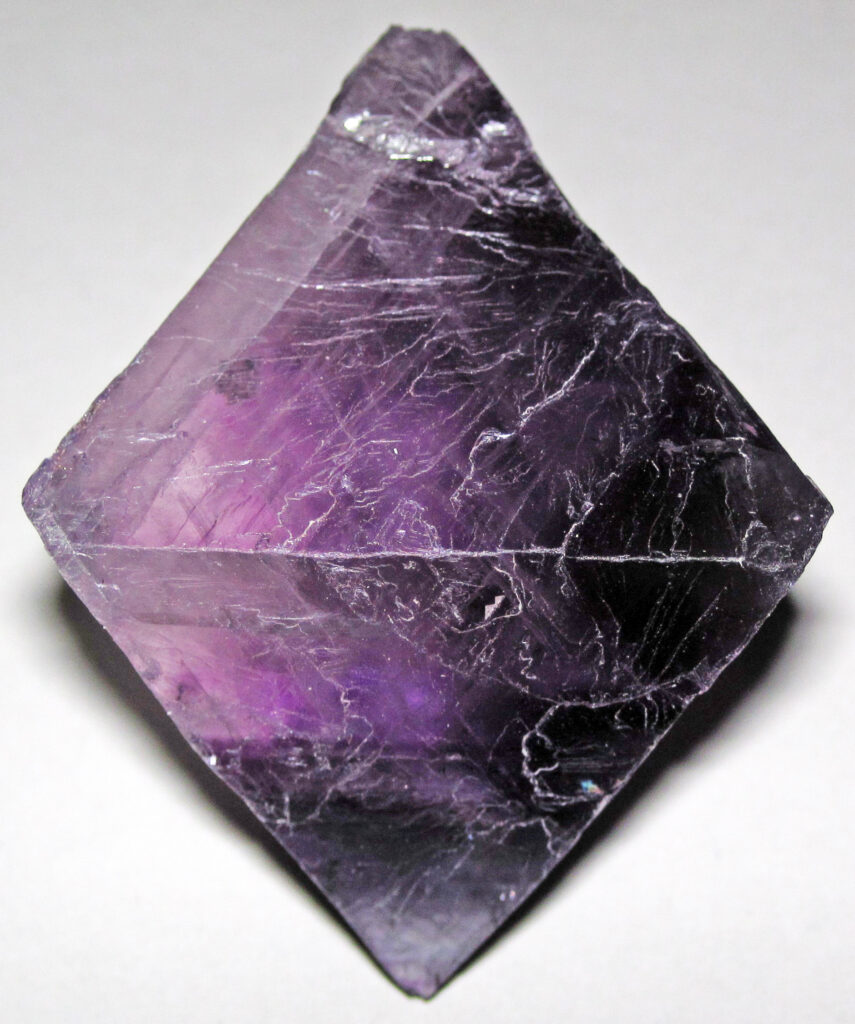
Origins and Types of Purple Fluorite
Fluorite is a mineral composed of calcium fluoride and is known for its wide range of colors. Purple fluorite belongs to the family of fluorite gemstones and derives its distinctive hues from trace amounts of various impurities. The gemstone’s coloring can range from soft lavender to deep violet, often intersected by bands of other colors, such as green or blue. This unique color patterning is attributed to the various mineral inclusions present during the formation of the gemstone. Purple fluorite is found in various regions around the world, including China, the United States, and Mexico, among others.
Metaphysical Properties of Purple Fluorite
In the realm of metaphysics, purple fluorite is highly regarded for its spiritually nurturing properties. It is believed to stimulate the third eye chakra, enhancing intuition, and promoting spiritual growth. Purple fluorite is said to provide mental clarity and focus, aiding in decision-making and problem-solving. By creating a harmonious balance between the mind, body, and spirit, purple fluorite is thought to help restore emotional balance and reduce stress. Some also believe that purple fluorite can enhance spiritual connection and facilitate communication with higher realms.
Purple Fluorite in Jewelry and Decor
The mesmerizing beauty of purple fluorite lends itself well to various creative endeavors, including jewelry design and home decor. In jewelry, purple fluorite is often used in pendants, earrings, and necklaces, showcasing its vibrant colors and unique patterns. Due to its relatively soft nature, purple fluorite is generally used in jewelry designs that offer protection and limit exposure to potential damage. In home decor, purple fluorite is used as decorative pieces, such as carved figurines, bookends, and countertop accents. Its vibrant colors and mesmerizing patterns make purple fluorite a delightful addition to any space.
Caring for Your Purple Gemstones
Now that you’ve acquired a beautiful collection of purple gemstones, it’s important to take proper care of them to ensure their longevity and continued allure. Here are some tips on cleaning, maintenance, and storage to keep your purple gemstones looking their best.
Cleaning and Maintenance Tips
To clean your purple gemstones, use a soft, lint-free cloth or a gentle jewelry cleaning solution specifically formulated for gemstones. Gently wipe the gemstones to remove any dirt, oil, or residue that may have accumulated. Avoid using harsh chemicals or abrasive cleaning agents, as they can damage the gemstone’s surface. In the case of harder gemstones, such as purple sapphires or purple diamonds, ultrasonic cleaners can be used with caution, following the manufacturer’s instructions. It is also advisable to have your gemstones professionally cleaned and inspected periodically to maintain their pristine appearance.
Advice for Storing Purple Gemstones
When storing your purple gemstones, it is important to protect them from scratches, impacts, and exposure to harsh environmental conditions. Keep your gemstones in a soft pouch or a lined jewelry box, ideally with separate compartments to prevent them from coming into contact with each other or other jewelry pieces. This will minimize the possibility of scratches or damage caused by friction. Additionally, consider storing your gemstones in a cool, dry place away from direct sunlight, as excessive heat and exposure to UV rays can affect their color and clarity over time.
Ensuring the Longevity of Your Purple Gemstones
To ensure the longevity of your purple gemstones, it is advisable to handle them with care and avoid exposing them to harsh chemicals, extreme temperatures, or sudden temperature changes. Remove your gemstone jewelry before engaging in activities that may subject them to impact or damage, such as sports or household chores. Regularly inspect your gemstones for any signs of damage or loose settings and have them professionally assessed and repaired if necessary. By following these simple guidelines, you can enjoy the beauty and allure of your purple gemstones for many years to come.

